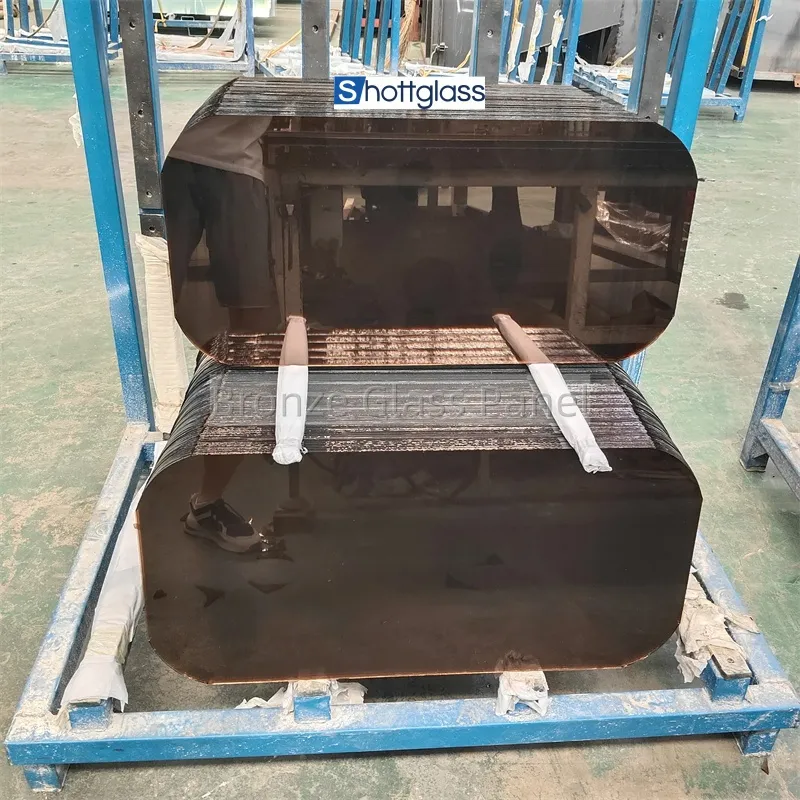10 月 . 11, 2024 00:07 Back to list
float glass tin bath
The Float Glass Tin Bath A Crucial Component in Glass Manufacturing
The float glass process, a hallmark of modern glass manufacturing, revolutionized the way glass is produced and reshaped the industry. At the heart of this innovative method lies the tin bath, a critical component that enables the production of high-quality flat glass with exceptional optical clarity. This article delves into the significance of the float glass tin bath, discussing its operation, advantages, and impact on glass quality.
Understanding the Float Glass Process
The float glass process was developed in the mid-20th century by Sir Alastair Pilkington and involves the creation of flat glass through a delicate interplay of materials and chemical processes. The process begins by melting raw materials, such as silica sand, soda ash, and limestone, at extremely high temperatures in a furnace. Once the raw materials are melted into a molten glass, they are poured onto a surface of molten tin in a controlled environment known as the tin bath.
The Role of the Tin Bath
The tin bath serves several crucial functions in the float glass process. First and foremost, it provides a perfect flat surface on which the molten glass can spread. The molten tin, being denser than the glass, allows the glass to float, leading to an even distribution of thickness and minimizing surface defects. As the glass floats on the tin, it gains a reflective surface that can be further enhanced through polishing post-production.
The temperature of the tin bath is meticulously controlled; typically, it operates at around 1000°C. This high temperature not only allows the glass to maintain a liquid state for optimal flow but also ensures that there is a smooth transition as the glass solidifies and moves downstream for additional processing. The use of molten tin helps to eliminate air bubbles and impurities, resulting in superior optical properties.
Advantages of the Float Glass Tin Bath
float glass tin bath

The advantages of utilizing a tin bath in glass production are manifold. One of the most significant benefits is the production of high-quality glass with uniform thickness and minimal distortion. This characteristic is especially critical in applications where visual clarity is paramount, such as in windows, mirrors, and solar cells.
Another notable advantage is the speed of production. The float glass process can produce large sheets of glass continuously, significantly increasing output compared to traditional glass-blowing methods. This efficiency not only reduces manufacturing costs but also meets the high demand for flat glass in various industries, including construction, automotive, and electronics.
Moreover, the tin bath system is environmentally friendly compared to older glass-making methods. Since the float process reduces the need for secondary operations, such as grinding and polishing, it generates less waste and lowers energy consumption. Additionally, the tin used in the process is recyclable, aligning the float glass production with sustainability initiatives in manufacturing.
Impact on the Glass Industry
The implementation of the float glass tin bath has had a profound impact on the glass industry. By allowing manufacturers to produce glass that meets modern standards for quality and efficiency, the tin bath has solidified its place as an essential technology in flat glass production. Industries reliant on high-quality glass have seen significant advancements as a result of this process, driving innovation in design and application.
From architectural glass façades to advanced automotive windshields, the products created using the float glass method demonstrate the importance of precision and quality. The tin bath technique continues to evolve, with ongoing research focused on improving performance and reducing energy consumption further.
Conclusion
In summary, the float glass tin bath is a cornerstone of modern glass manufacturing, playing an indispensable role in producing flat glass of unparalleled quality. Its ability to create uniform, distortion-free glass while optimizing production efficiency makes it a pivotal technology in the industry. As the demand for high-performance glass continues to grow, the float glass process and its tin bath component will undoubtedly remain critical to meeting the challenges and opportunities of the future.
-
Wired Glass: A Strong and Secure Glass Solution for Various Applications
NewsNov.04,2024
-
Tinted Glass: A Stylish and Functional Choice for Modern Homes
NewsNov.04,2024
-
The Elegance and Versatility of Silver Mirrors
NewsNov.04,2024
-
The Advantages of Copper Free Mirrors
NewsNov.04,2024
-
Tempered Glass: A Reliable Choice for Modern Applications
NewsNov.04,2024
-
Pattern Glass: Stylish and Functional Glass for Modern Design
NewsNov.04,2024
Related PRODUCTS














